Frequently Asked Questions
How Do I Match PowerStop Products to My Vehicle?
PowerStop’s Brake Finder tool makes it easy to find exactly what you need for your specific vehicle. Here’s a step-by-step guide on how to use the Brake Finder to find the perfect match for your vehicle and select a retailer to purchase from:
Step 1: Access the Brake Finder Tool
- You can find the Brake Finder tool right here on the PowerStop website. You can even find it at the top of the page you’re on right now. Just look for “Brake Finder” and click on the “Match Your Vehicle” button right next to it. The Brake Finder tool also rests predominantly on our home page, right below the words “Find the Right Brakes for Your Vehicle.”
Step 2: Enter Your Vehicle Information
- Select Your Vehicle’s Year: Begin by selecting the year of your vehicle. This helps narrow down the model specifics and ensure compatibility.
- Choose Make: Next, select the make of your vehicle (e.g., Ford, Toyota).
- Choose Model: After selecting the make, you will need to choose the model of your vehicle (e.g., Mustang, Camry).
- Choose Sub-Model: Some models have sub-models that may have different brake requirements (e.g., GT, SE).
- Select Kit Position: Finally, indicate whether you are looking for kits for the front, rear, or both front and rear. This helps in finding the exact match that fits your needs.
Step 3: Review Matching Products
- Submit Your Information: After entering all your vehicle details, submit the information. The Brake Finder will display the PowerStop products that match your vehicle’s specifications.
- Review Product Options: Look through the options to find the right product for your needs. Product details often include information about the kit components, performance features, and suitability for different driving conditions (like daily commuting or more performance-oriented driving).
Step 4: Choose a Retailer
- Select a Product: Once you have decided which product fits your needs, you can click on the product listing link to view purchasing options (i.e. add powder-coated calipers).
- Choose Retailer: When you search through PowerStop’s Brake Finder tool, you will see links to multiple retailers that carry the product. Follow any of those links to be directed to the retailer’s website and make your purchase!
Does PowerStop Offer a Warranty?
Yes! PowerStop offers a tiered warranty system depending on the product. Performance and Replacement Brake Kits come with a 60-day satisfaction guarantee and a 3-year/36,000-mile or 2-year/24,000-mile warranty against defects and poor workmanship, respectively. Individual brake components like rotors, pads, or calipers are covered for 90 days or 3,000 miles. Track Day kits and pads have a 30-day warranty. These warranties exclude coverage for normal wear, misuse, and improper installation. The warranties do not cover labor costs.
Learn More About Our Limited Warranty
Warranty FAQs
Does PowerStop Offer New Hardware with Kits & Components?
Yes! Unlike many other brake manufacturers, PowerStop provides new hardware with all their brake kits and individual components (except Z16 Evolution brake pads and Track Day brake kits and components) to ensure a complete and reliable installation. This includes everything necessary for a standard setup, such as bolts and brackets, depending on the specific kit or component purchased.
It’s important to note that this provision does not extend to the Track Day series products. PowerStop Track Day Brake Kits are designed for high-performance applications and typically cater to users who may have specific custom needs or preferences for hardware, hence, new hardware is not included in these particular kits. Customers should prepare to source their own hardware when purchasing Track Day series brakes.
What Is the Break-In Procedure?
The break-in procedure for new brake pads and rotors, known as bedding, is crucial for optimal brake performance. It involves a series of moderate to aggressive stops to evenly deposit the pad material onto the rotors, creating a consistent friction layer that enhances stopping power.
For breaking in PowerStop Drilled & Slotted Rotors, perform five initial stops from 40 mph to 10 mph without complete stops in between, followed by five stops from 35 mph to 5 mph (expect to smell some resin as the brakes get hot). Finally, allow the brakes to cool by driving at moderate speeds without stopping.
This procedure not only ensures smoother and quieter braking but also maximizes the lifespan and efficacy of your brake system. If skipped, it may lead to uneven pad deposits, resulting in vibrations and suboptimal braking performance.
Other products have different break-in procedures; learn more below:
Learn More About the Break-In Procedure
Find the Break-In Procedure for Evolution Coated Rotors
Find the Break-In Procedure for Track Day Brakes
How Can I Tell How Many Pistons Are in My Brake Calipers?
This is an important question, especially if you’re using our Brake Finder; you may need to know the answer to get matched with the correct parts!
Determining the number of pistons in brake calipers is straightforward and often doesn’t require wheel removal, thanks to open-wheel designs on modern vehicles. You can visually inspect the calipers; single and dual piston calipers typically show visible ‘arches’ indicating the number of pistons. For calipers with four or six pistons, the outlines of the pistons are usually discernible from the outside.
Learn More About Determining the Number of Pistons in Your Brake Caliper
How to Tell if I Have Vented Rotors?
Our brake finder sometimes requires knowing the answer to this question to match you with the correct parts. Determining whether your vehicle’s brake rotors are vented involves a few steps. Vented rotors are common in many vehicles, particularly on the front brakes, as they help dissipate heat more effectively during braking. Here’s how you can tell if you have vented rotors:
Visual Inspection
Location and Visibility:
- Park your vehicle on a flat surface and ensure it is securely parked.
- If possible, remove the wheel to get a clear view of the rotor. If you can’t remove the wheel, you might be able to see the rotor through the spokes of the wheel.
Look at the Edge of the Rotor:
- Examine the edge of the brake rotor; this is the easiest way to identify if it’s vented.
- Vented rotors have a noticeable space or gap between two solid surfaces, almost like two thin discs that are attached together with spaces in between them. This gap allows air to flow through, which helps in cooling the rotor.
Touch Test (When the Vehicle is Cool)
Feel the Edges:
- Carefully touch the edges of the rotor (ensure the car has been stationary for a while to avoid burns).
- You should feel the inner and outer surfaces and the space in between if the rotor is vented. There might be ridges or fins in this space, which are part of the ventilation system.
How Do I Know What Size Brake Rotors I Have?
The Brake Finder tool sometimes asks this question. Here’s how to find out what size brake rotors you have:
Method 1: Manual Measurement
If you prefer to determine the rotor size manually, follow these steps:
- Prepare Your Vehicle:
- Park your vehicle on a flat, secure surface and apply the parking brake.
- For best access and safety, consider lifting the car using a jack and securing it on jack stands. Remove the wheel to expose the rotor.
- Measure the Rotor Diameter:
- Use a tape measure or a caliper tool to measure the diameter of the brake rotor from edge to edge through the center. Make sure to measure the largest possible diameter.
- It’s crucial to measure from the outer edge since some rotors taper off towards the center.
Method 2: Vehicle Specifications
- Owner’s Manual:
- The easiest and most straightforward method is to check your vehicle’s owner’s manual under the brake system specifications section. It usually lists the rotor dimensions.
- Service Manual or OEM Specifications:
- If you have access to a service manual for your vehicle, it will provide detailed dimensions for every component, including brake rotors.
- Dealership or Manufacturer’s Website:
- Visiting a dealership or checking the manufacturer’s website can also provide information based on the VIN (Vehicle Identification Number) of your car. They can tell you the exact specifications of the parts installed.
Method 3: Professional Help
- Visit a Mechanic:
- If you’re unsure about measuring the rotor size yourself, a professional mechanic can quickly and accurately determine the rotor size for you. This might be the safest option if you are also considering getting your brakes serviced.
Do I Need to Change My Calipers When Upgrading to PowerStop Pads/Rotors?
No. When upgrading your vehicle’s brake system with PowerStop pads and rotors, you do not need to change your brake calipers, as long as your original caliper is in good working condition. This is because PowerStop designs their brake pads and rotors to be bolt-on upgrades that fit directly into the existing factory caliper and mounting hardware.
Do I Need to Make Any Modifications to My Vehicle in Order to Install PowerStop Brakes?
No. Upgrading to PowerStop brakes offers a major advantage: they are designed as bolt-on upgrades. This means they easily fit into your existing vehicle’s brake system without any need for modifications. When you choose PowerStop, upgrading your vehicle’s stopping power is easy!
My Vehicle Isn’t Listed in the Brake Finder, Does PowerStop Have Brakes for My Vehicle?
No. If your vehicle isn’t listed in PowerStop’s Brake Finder, it means that PowerStop does not currently offer brake kits or components specifically designed for your model.
How To Guides
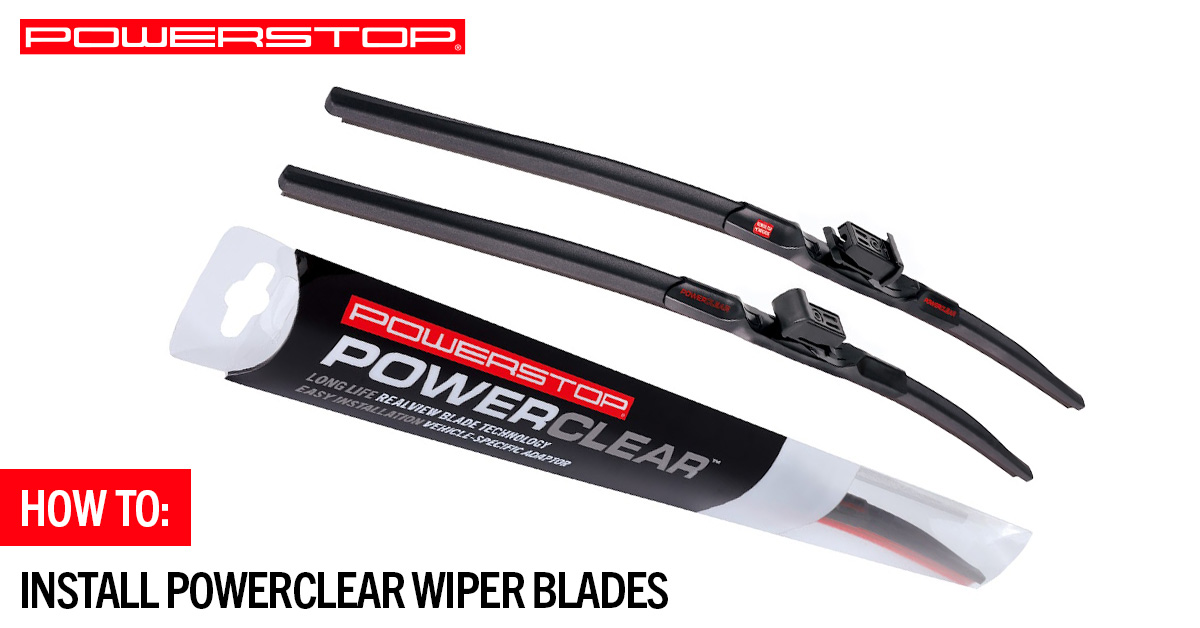
How to Install PowerClear Wiper Blades
Durable, reliable, and easy to install, PowerClear Wiper Blades provide top-tier quality in any weather. Installation Instructions for PowerClear Wiper Blades - Hook Verify the lengths of your Driver and Passenger blades as they may be different. Follow PowerClear Windshield Cleaning Wipe instructions to clean windshield surface. We recommend the windshield be cleaned of any…
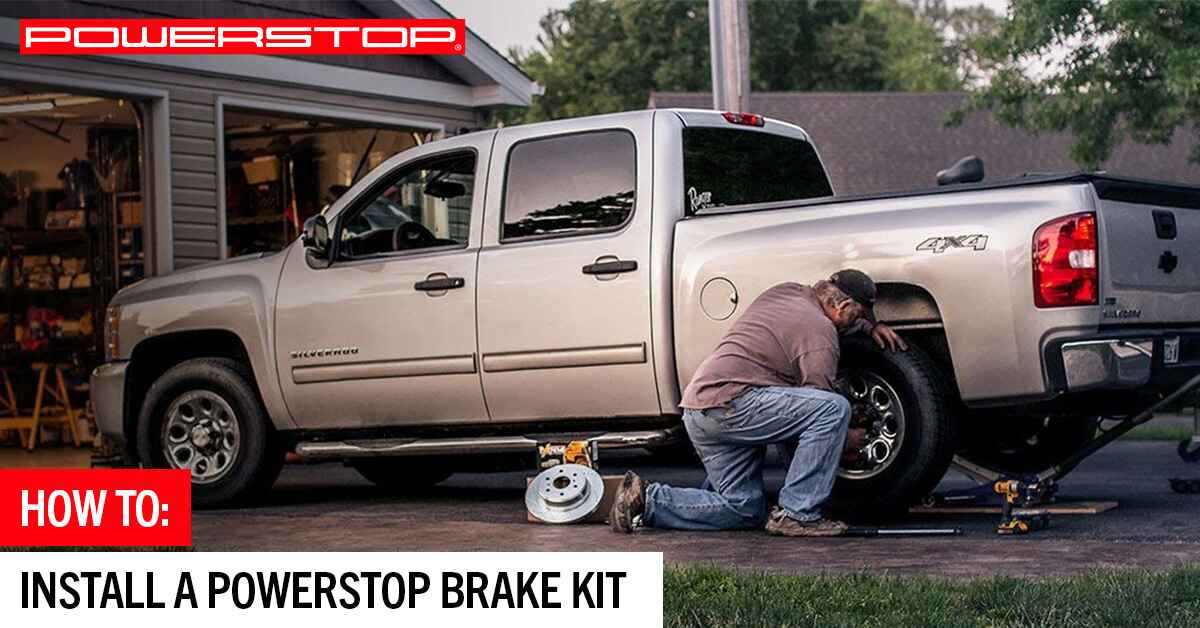
Brake Kit Installation Guide
Still have questions? Contact our technical support: [email protected] The installation guide is for reference only. Please refer to the vehicle's service manual or professional installer for complete instructions. How To Install a PowerStop Brake Kit Step 1: Tools Have the following parts and specialty tools available before you start a pad and rotor installation: PowerStop…
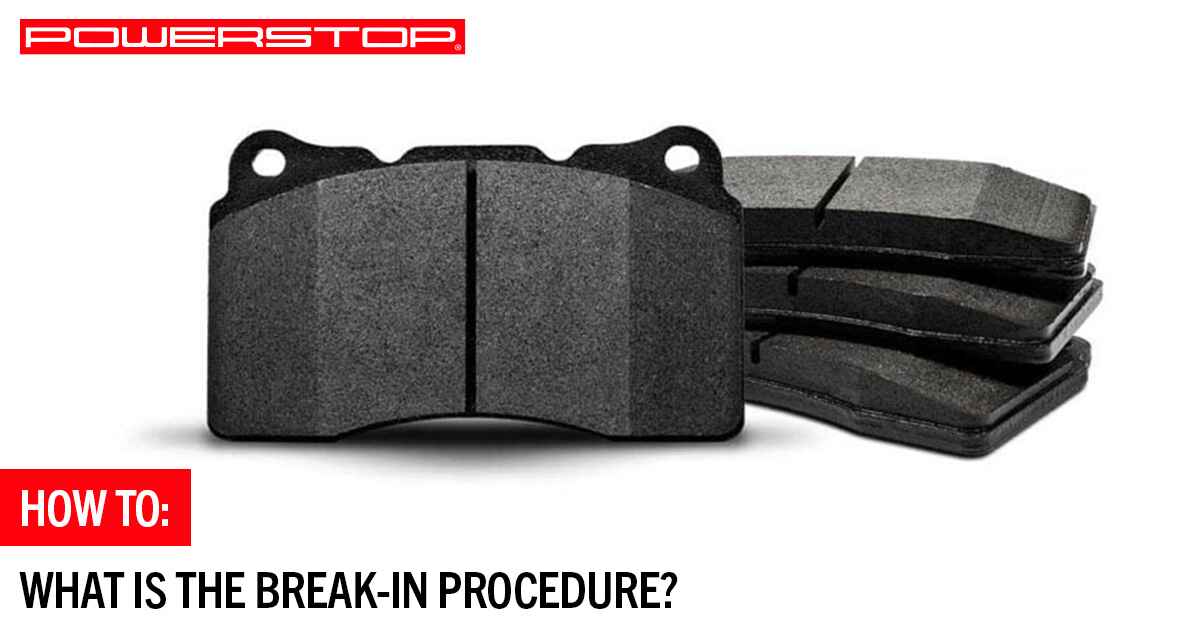
What is the Break-In Procedure?
What is the Break-In Procedure? IMPORTANT: FOLLOW THE PROPER BREAK-IN PROCEDURE FOR NEW BRAKE PADS/ROTORS USING THE PAD BEDDING PROCEDURE AS FOLLOWS. PROPER PAD BEDDING CAN PREVENT PERFORMANCE ISSUES. The break-in procedure is critical to brake performance. Proper break-ins are necessary to establish an even layer of friction material deposited on the rotors from the…
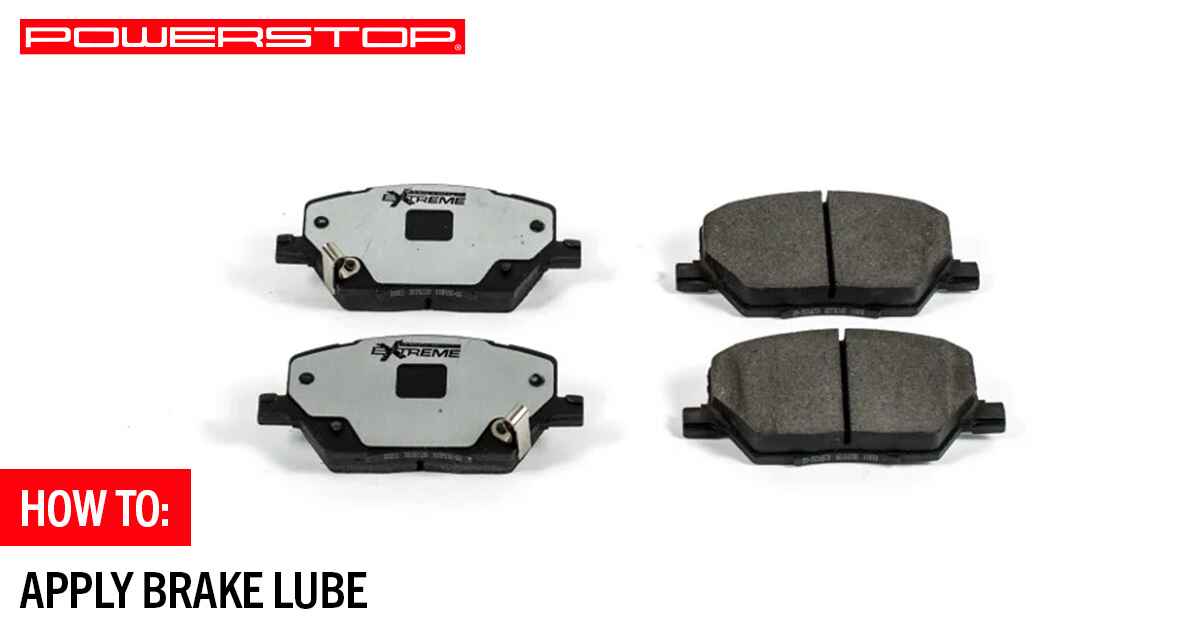
How To: Apply Brake Lube
How To Apply Brake Lube Your vehicle’s brakes use friction to slow down and stop. During the braking process, brake pads are hydraulically pressed against the brake rotor. While it may seem counterintuitive to use lube on a system that relies on friction, lubrication is essential to brake function. Ensuring that your brakes work properly…
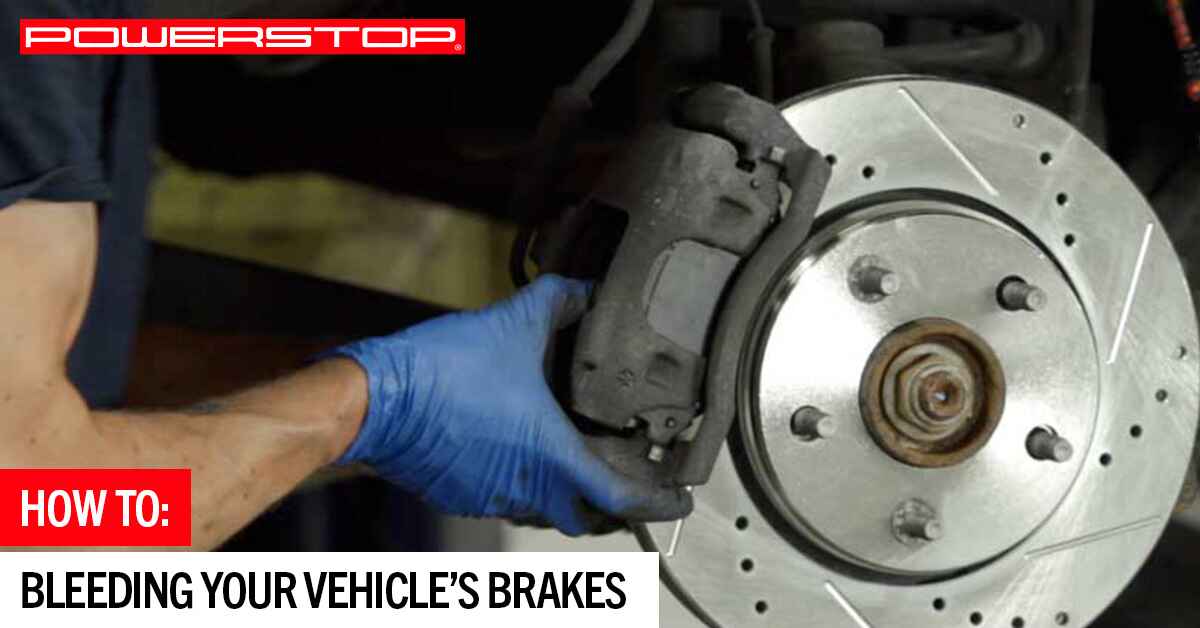
How to Bleed Brakes
Bleeding Your Vehicle's Brakes Please note: All vehicles are different. The procedure below is intended as a general guide and is not a substitute for the vehicle service manual which should be referenced throughout the process. The importance of proper brake function cannot be overstated. If you are unsure of your ability to properly perform…
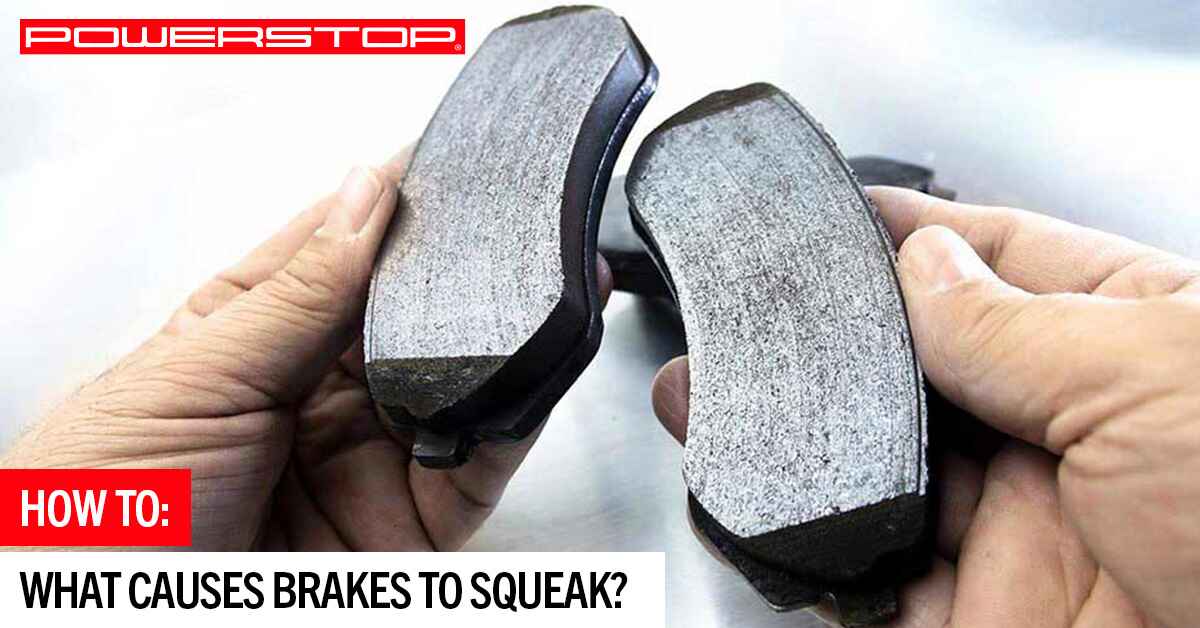
How To Fix Noisy, Squeaky Brakes
It can be unsettling to hear squeaks, squeals, and other noises coming from your brakes. While squeaky brakes are not always a cause for panic, it is important to determine the reason for the noise instead of ignoring it. What Causes Brakes to Squeak? In order to determine how to fix noisy, squeaky brakes, you…
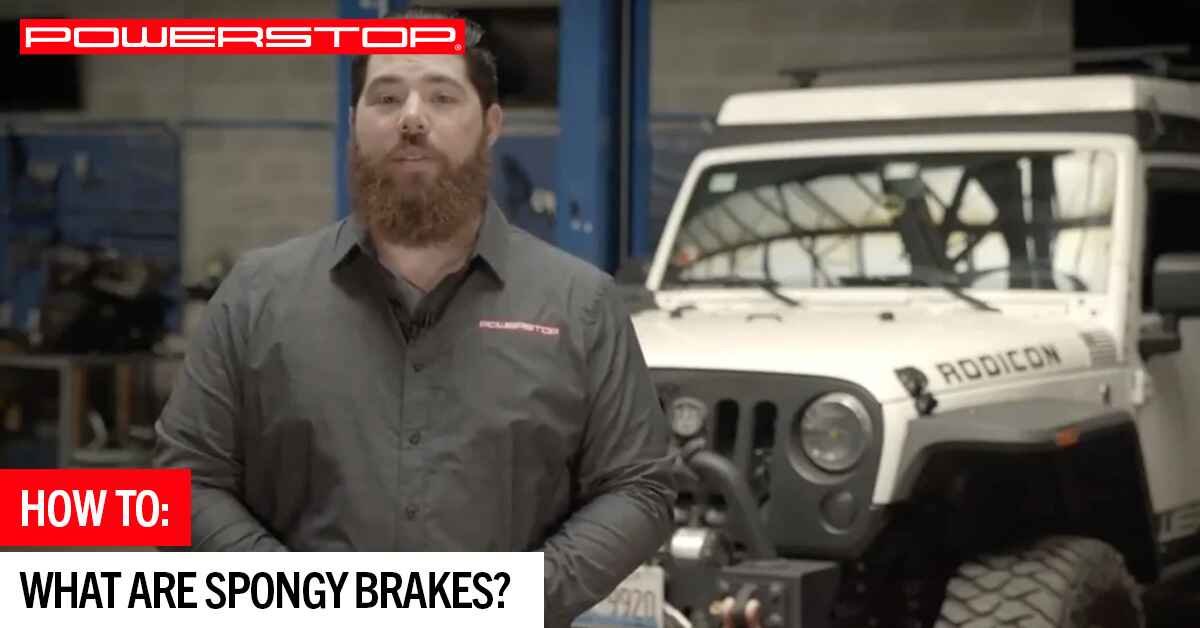
How To Diagnose a Spongy or Soft Brake Pedal
Your brakes are a vital component of controlling your vehicle. When you press down on the brake, it should feel firm. If you notice your brakes feeling soft or spongy, something is wrong. In this PowerStop guide, we will explain how to identify spongey brakes, common causes of soft pedals, and discuss when it may…
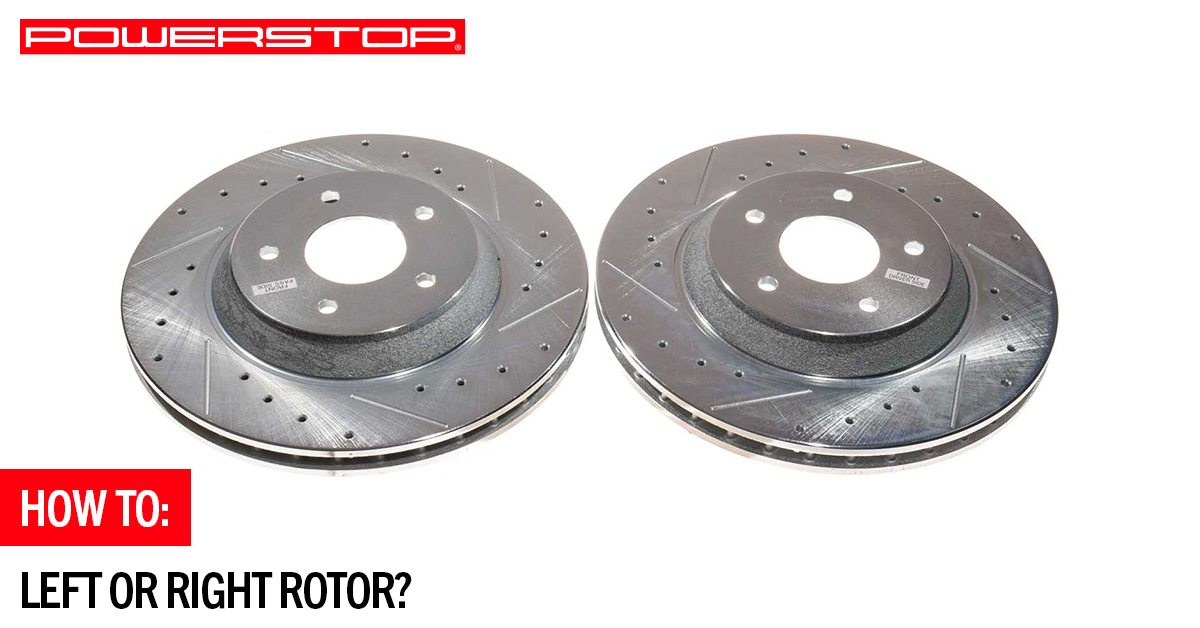
How To: Tell the Difference Between Left and Right Drilled & Slotted Rotors
How to Tell Apart Left or Right Drilled & Slotted Rotors For drilled & slotted rotors, it is important to pay attention to which is the left and right rotor. Luckily, if your rotors are not labeled, there is an easy way to tell. On the top side of the rotor, follow up along the…
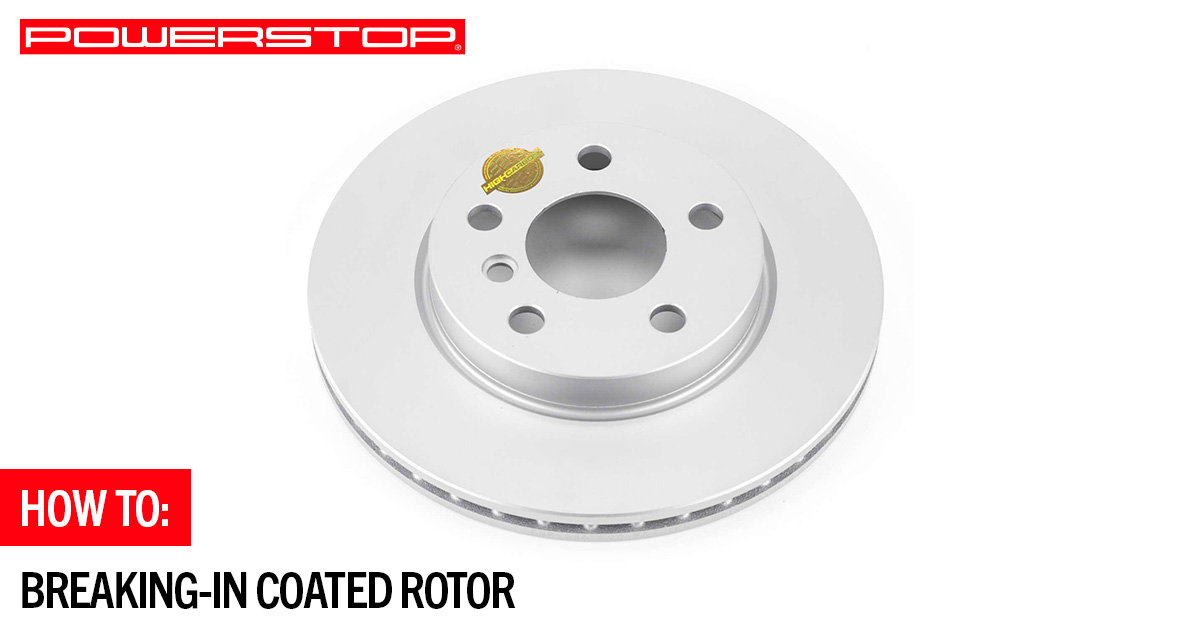
How to: Break-in Your New Evolution Coated Rotors
Breaking in Your New Evolution Coated Rotors Now that you’ve purchased and installed your new PowerStop Evolution Coated Rotors, it is important to properly break them in (a process called “bedding”). During the bedding process, the rotors and brake pads are subjected to a series of controlled stops, which helps to distribute an even layer…
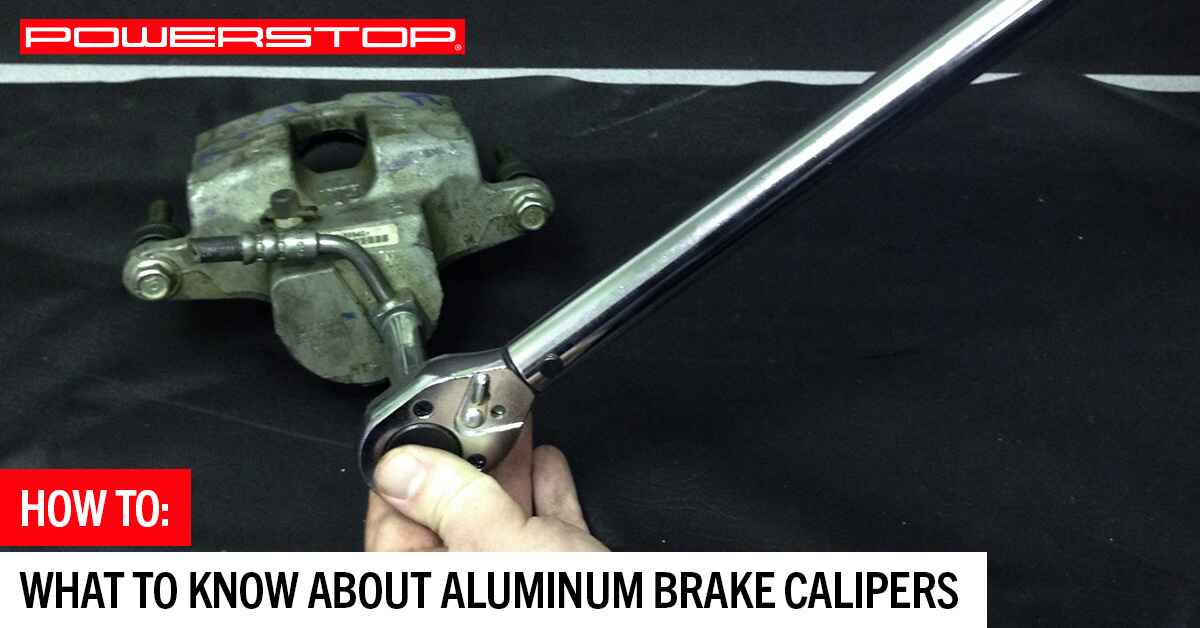
I Have Aluminum Brake Calipers, What Do I Need to Know?
What To Know About Aluminum Brake Calipers If the engineers of your vehicle decided to use aluminum for the body of the calipers on your vehicle, they were probably more focused on performance than they were on the cost to manufacture. Aluminum calipers enhance the performance of a vehicle by reducing “un-sprung weight”, which helps…
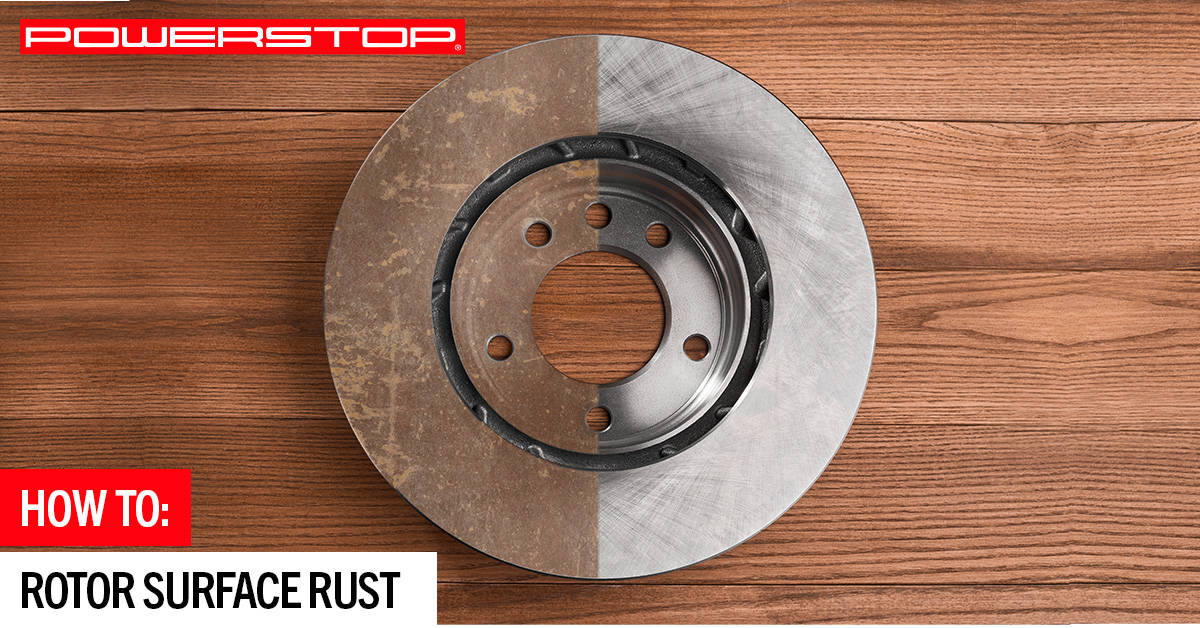
Is Brake Rotor Surface Rust a Problem?
Rust Problems With Your Brake Rotors If you’ve noticed surface rust on your brake rotor, it’s most likely nothing of concern. Surface rust will be cleaned off with normal driving. However, if the rust has gone on to cause pitting in the rotor, you have a larger issue. This usually takes months of a car…
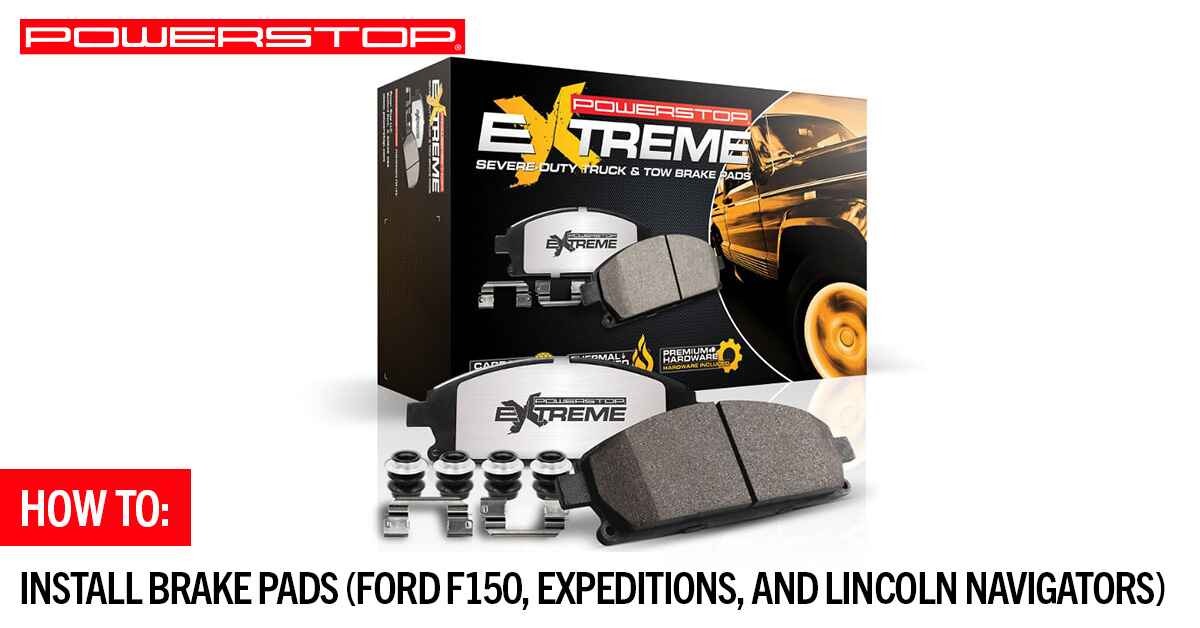
How to-Install Brake Pads (2010-2018 Ford F150, Expeditions, and Lincoln Navigators)
How to- Install Brake Pads (Ford F150, Expeditions, and Lincoln Navigators) Ready to install new brake pads on 2010 to present Ford F-150, Expeditions, and Lincoln Navigators? PowerStop is here to help! Below we discuss the common signs that indicate it’s time to replace your pads and why it’s so important to replace pads as…
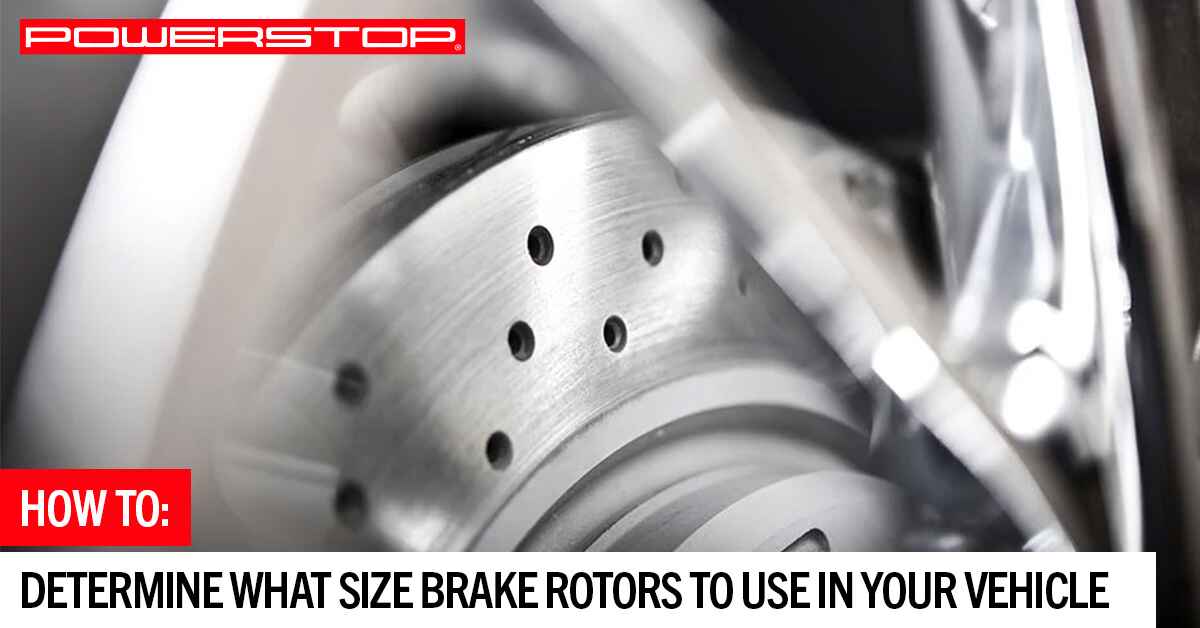
Does PowerStop offer conversion on rotor sizes?
Yes, we do offer some rotor size upgrades in our Big Brake Kit line. Many of our performance upgrade brake kits and their components follow the OEM Specifications/Standards. How to Determine What Size Brake Rotors to Use in Your Vehicle Brake rotors are durable elements of your vehicle’s braking system, but like any other part…
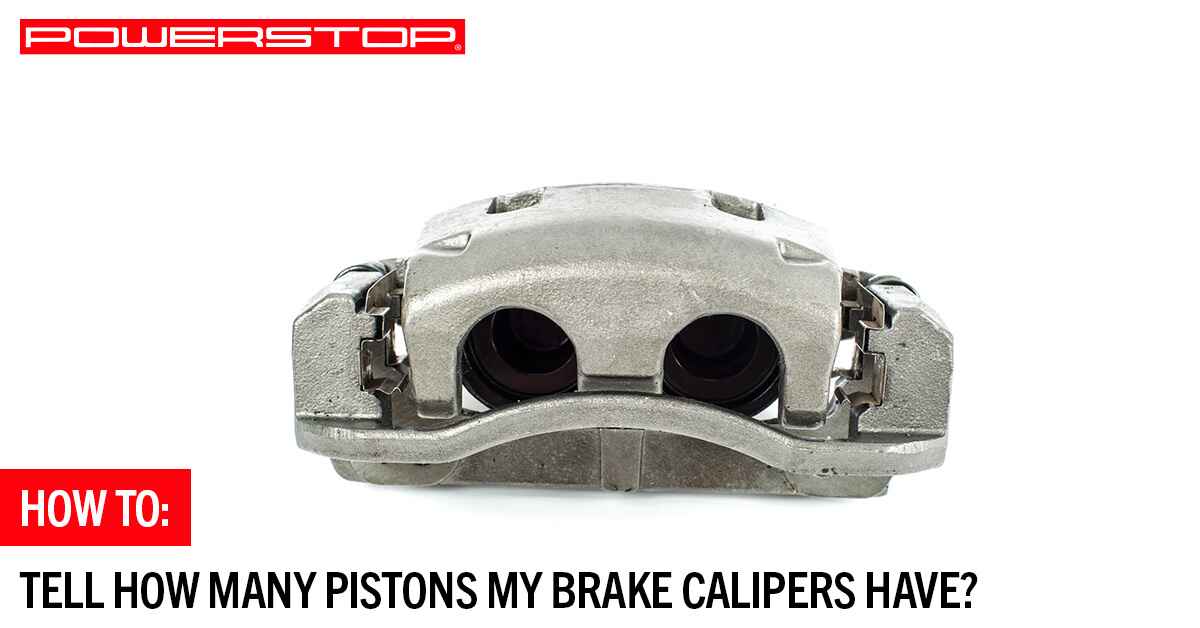
How To: Tell How Many Pistons are in a Brake Caliper
How To Tell How Many Pistons My Brake Calipers Have? Quite frequently our Brake Finder will ask, “how many pistons do the front/rear calipers have?” Don’t worry! You probably don’t even have to take off your wheel to find the answer. Modern vehicles typically have open-wheel designs to make it easy to visually confirm how…
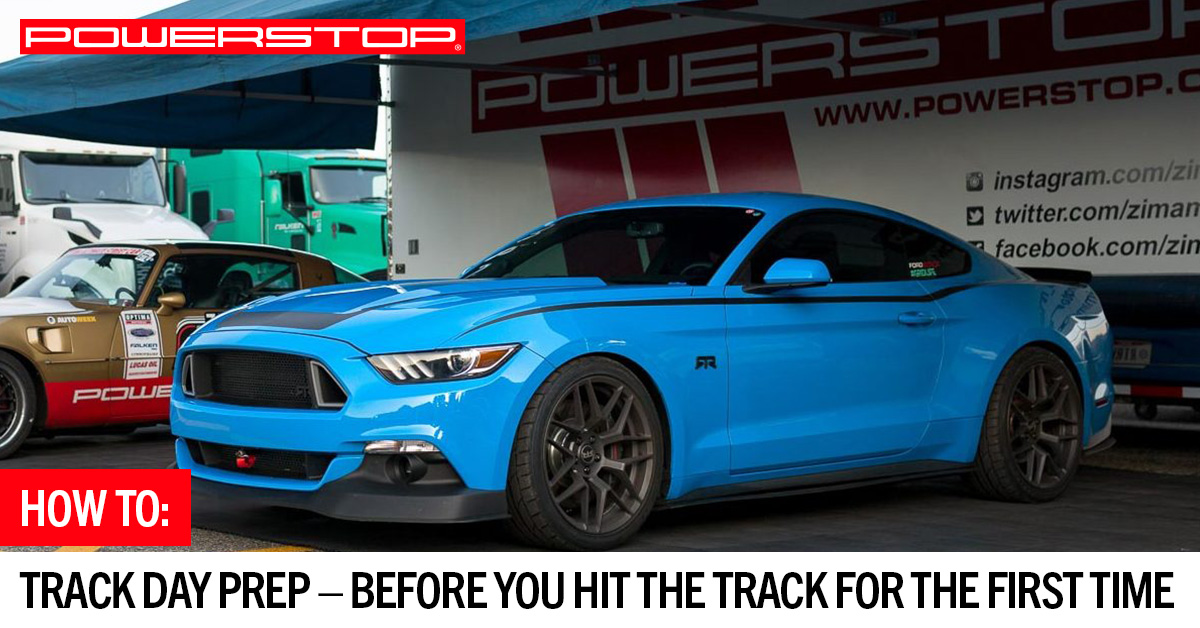
How To: PowerStop Track Day Break-In Procedure
How To Break-in Your New PowerStop Track Day Brake Pads Breaking in, or “bedding” your brakes is an essential step in any brake job. Our PowerStop Track Day Brake Pads require a special break-in procedure that is different from our Street Performance brake pads. In the video below, Andrew Lewis, one of the mechanics at…
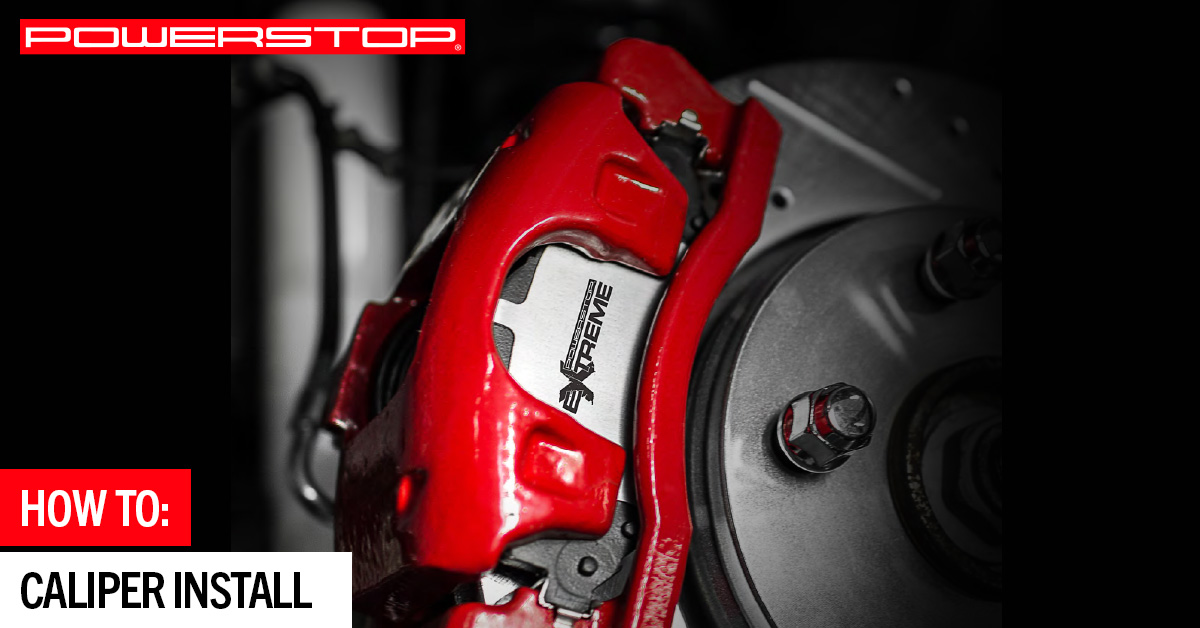
Helpful Tips For Installing A New Brake Caliper
Brake Caliper Install Tips & Tricks Installing a brake caliper on your vehicle? You’ve come to the right place. Brake calipers are very important to a vehicle’s brake system as brake fluid flows to the piston(s) in the caliper to press the brake pads onto the rotor. If you are preparing to install a new…
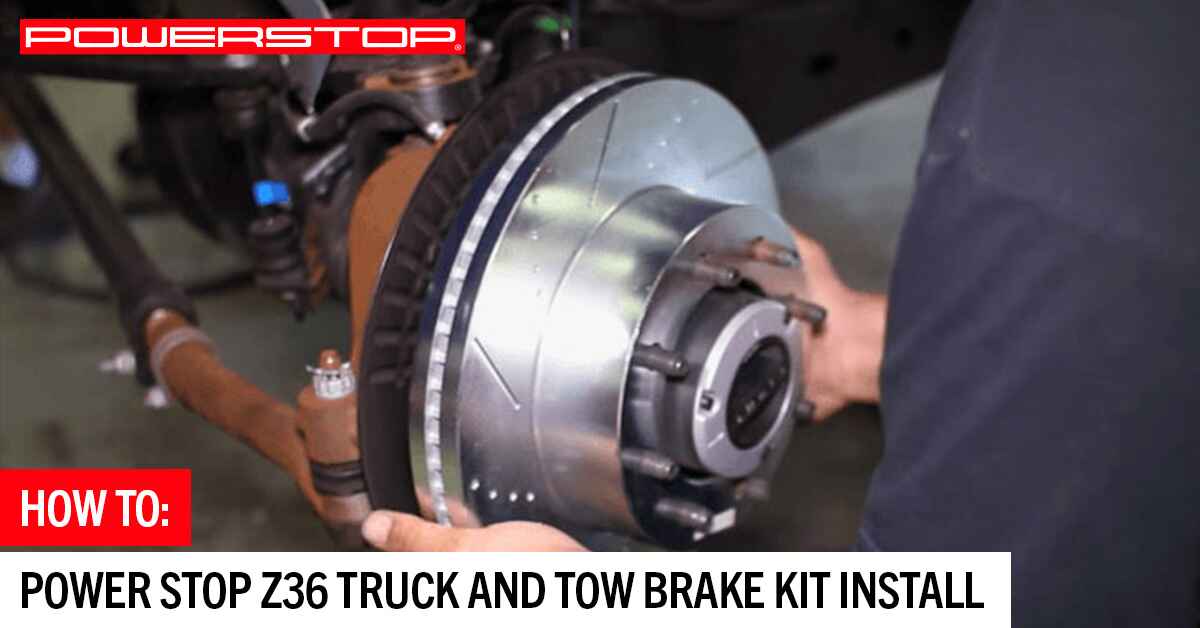
2007-2017 Jeep Wrangler JK JKU Power Stop Z36 Truck and Tow Complete Brake Kit Install
https://youtu.be/a4gF4toD-CQ 2007-2017 Jeep Wrangler JK JKU Power Stop Z36 Truck & Tow Complete Brake Kit Install In this video, Jason Lewis covers the installation of the Extreme Z36 Truck and Tow Brake Upgrade Kit on his 2013 Jeep JKU. Jason walks you through how to replace the brake rotors and pads but also explains why…
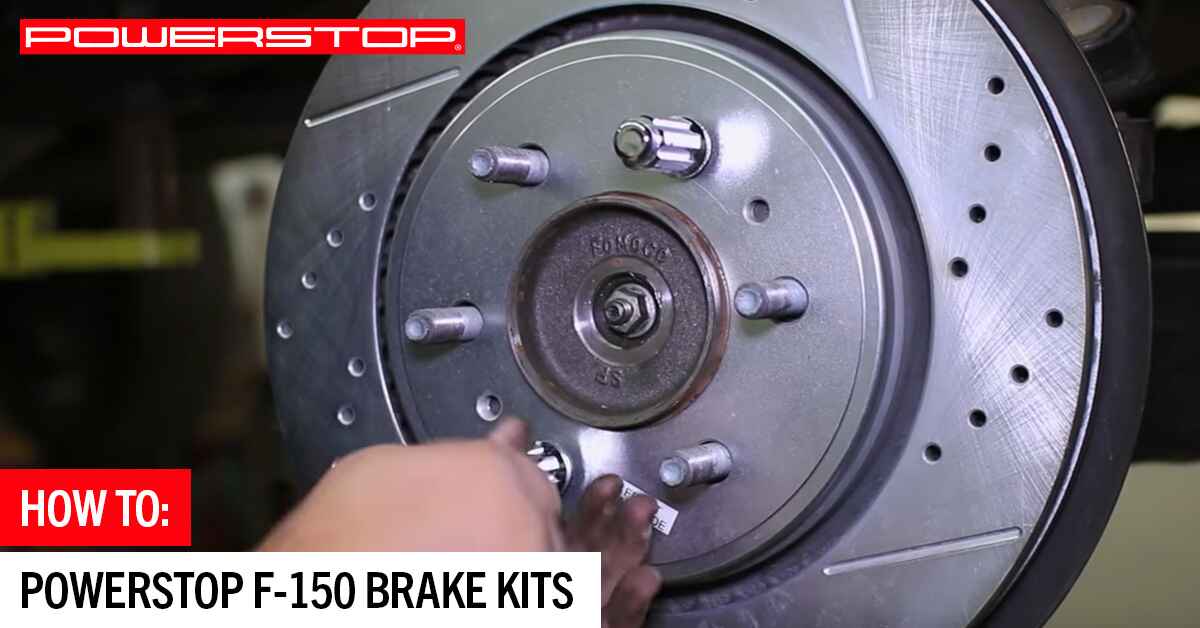
2015-2016 F-150 Power Stop Z36 Extreme Truck and Tow Brake Kit Install
PowerStop F-150 Brake Kits Trucks are naturally heavy. It just comes as a standard part of the package. Too bad nobody sent that memo to your F-150's factory brakes. Your factory brake pads and rotors struggle bringing a bone-stock F-150 to a decent stop, especially after putting a good amount of miles on them.…

2013-2016 Super Duty 4WD Power Stop Z36 Truck and Tow Brake Kit Install
Power Stop Z36 Truck and Tow Brake Kit Install If you use your Super Duty 4WD for heavy hauling or towing, you need the kind of braking system that you can rely on when it comes to getting the best stopping power from any speed when you need it most. Unfortunately, your factory stock brake…
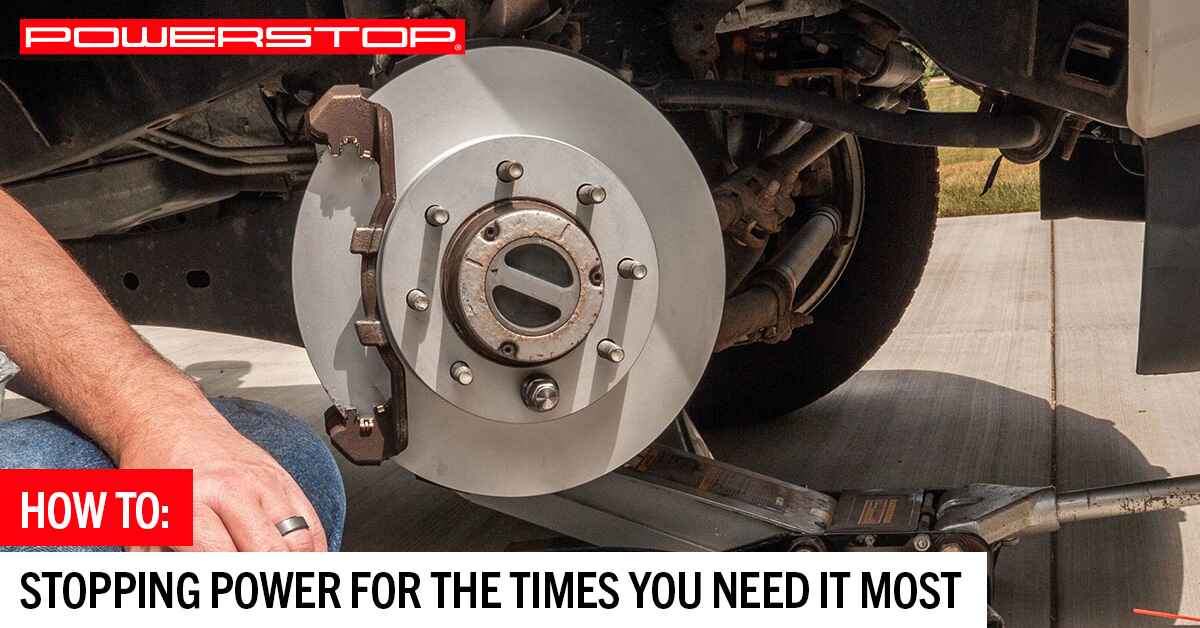
2005-2007 Super Duty 4WD PowerStop Z36 Truck and Tow Brake Kit Install
Stopping power for the times you need it most The factory front and rear brake rotors and brake pads on your F250 or F350 Super Duty 4WD do a decent job of stopping your truck, but if you're hauling any heavy loads or towing up and down steep hills, you need a sizable increase…

How to Clean Brake Rotors of Dust, Rust, and Corrosion (Step-by-Step)
HOW TO CLEAN BRAKE ROTORS OF DUST, RUST, AND CORROSION (STEP-BY-STEP) Not only are brake rust and dust unsightly, but they are corrosive to your wheels—and because brakes require friction and brake pad wear to function, some level of dust is also inevitable. Your wheels will always be exposed to dust from your brakes; that…
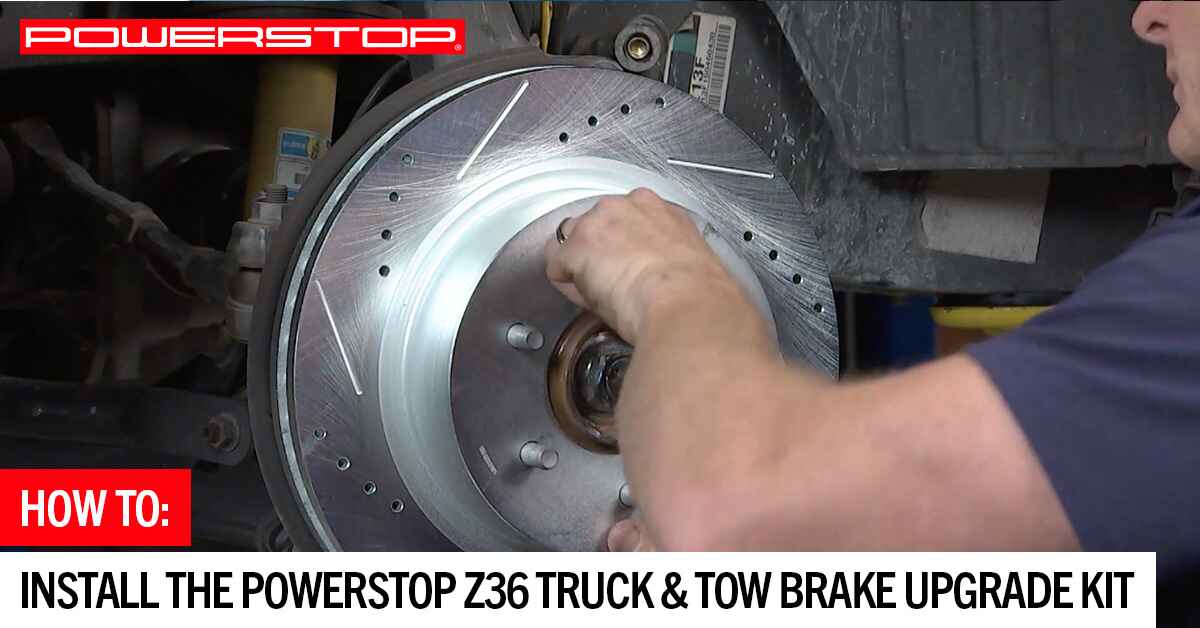
Truck U Series: PowerStop Z36 Extreme Truck & Tow Brake Kit Install
How To Install the PowerStop Z36 Truck & Tow Brake Upgrade Kit The PowerStop Z36 Truck & Tow Brake Upgrade Kit is the ultimate upgrade for trucks that haul extra weight, tow a trailer or boat, have a larger wheel/tire combination, or simply want better stopping power. Features and Benefits of the PowerStop Z36 Truck…
Installation Options
Warranty Information
Customer Support
Our team of brake experts are here to help you.
